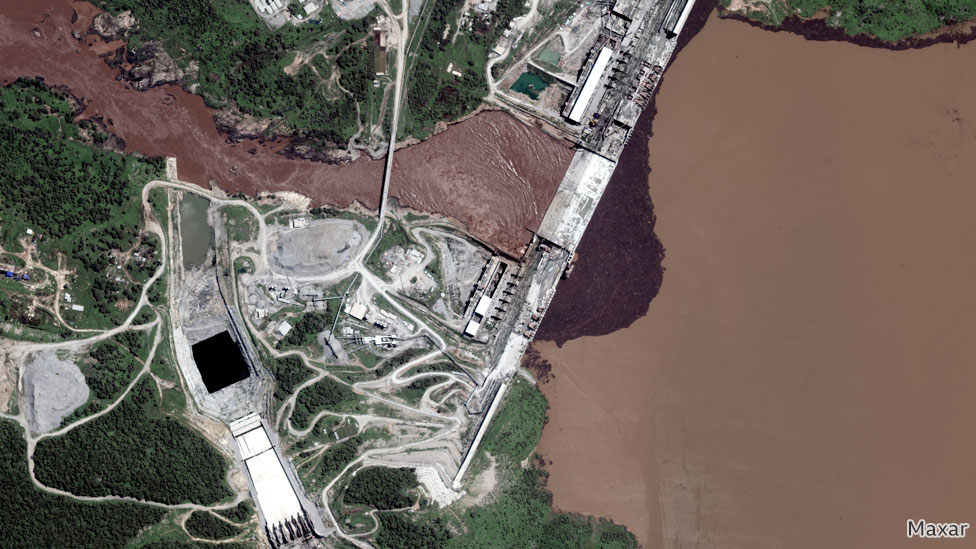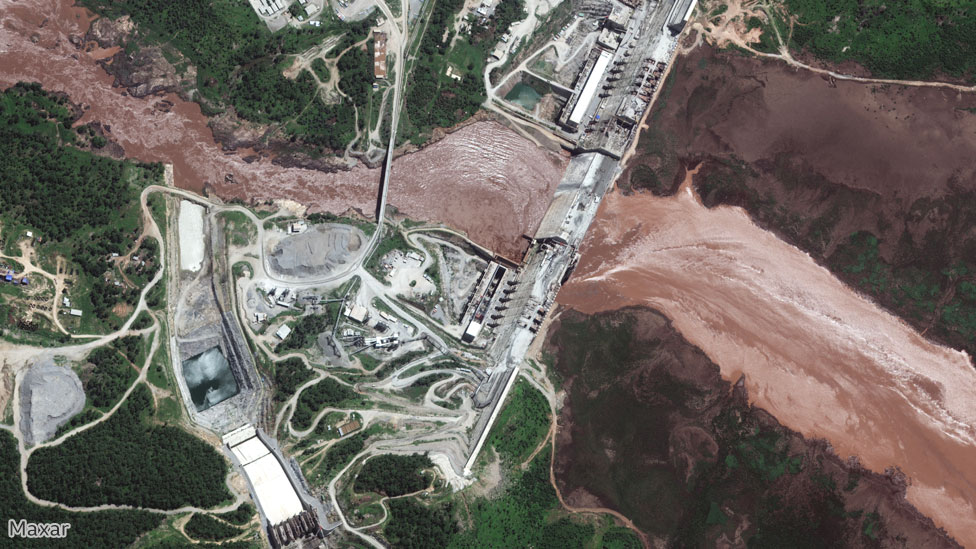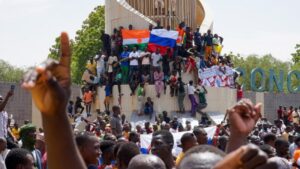
A reservoir behind Ethiopia’s disputed Grand Renaissance dam on the River Nile has started filling with water – a day after talks with Egypt and Sudan ended without agreement, officials say.
Ethiopian Water Minister Seleshi Bekele confirmed the latest satellite images showing water levels rising.
Ethiopia sees the hydroelectric project as crucial for its economic growth.
But Egypt and Sudan, which are downstream, fear the large dam will greatly reduce their access to water.
Years of fraught negotiations have failed to reach a consensus on how and when to fill the reservoir, and how much water it should release.
Egyptian Foreign Minister Sameh Shoukry has previously warned that filling and operating the dam without an agreement “that protects the downstream communities… would heighten tensions and could provoke crises and conflicts that further destabilise an already troubled region”.
A conflict between Egypt and Ethiopia, which are both US allies, would put millions of civilians at risk.
What did the minister say?
On Wednesday, Mr Seleshi told Ethiopian state broadcaster EBC that water had started filling the reservoir “in line with the natural process”, adding: “The construction of the dam and the filling of the water go hand in hand.”
His comments come after satellite images taken between 27 June and 12 July show a steady increase in the amount of water being held back by the dam.
The reservoir behind the dam will fill naturally during Ethiopia’s rainy season, which began in June and lasts until September.
The latest satellite images caused a wave of excitement in Ethiopia over the $4bn (£3.2bn) Grand Ethiopian Renaissance Dam (Gerd) project – but caused concern in Egypt.

When fully operational, the dam will become the largest hydro-electric plant in Africa, providing power to some 65 million Ethiopians, who currently lack a regular electricity supply. However, Egypt gets almost all of its water from the Nile and fears the dam will reduce supplies.
How will the dam be filled?
The minister’s announcement has confirmed that rain water has already started to build up. Ethiopia had always said it would fill the dam in July, while Egypt had warned it to delay while talks continued.
Given the stage that the construction is at “there is nothing that can stop the reservoir from filling to the low point of the dam”, Dr Kevin Wheeler, who has been following the Gerd project since 2012, told the BBC.
From the start of the process in 2011, the dam has been built around the Blue Nile as it continued to flow through the enormous building site.
Africa’s biggest hydropower project

Builders could work on the vast structures on either side of the river without any problem. In the middle, during the dry season, the river was diverted through culverts, or pipes, to allow that section to be built up.
The bottom of the middle section is now complete and the river is currently flowing through bypass channels at the foot of the wall.
Source: Reuters/BBC







